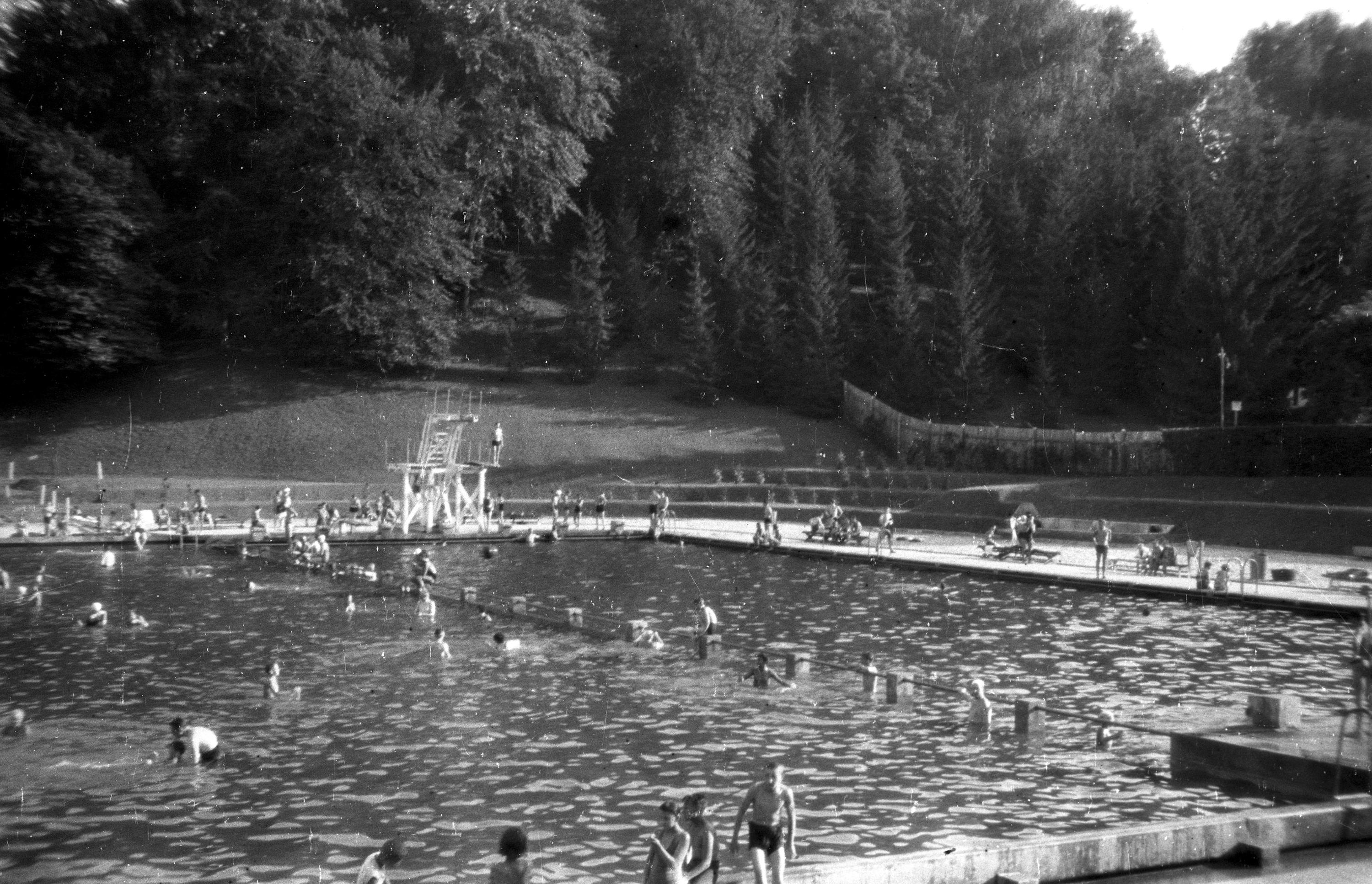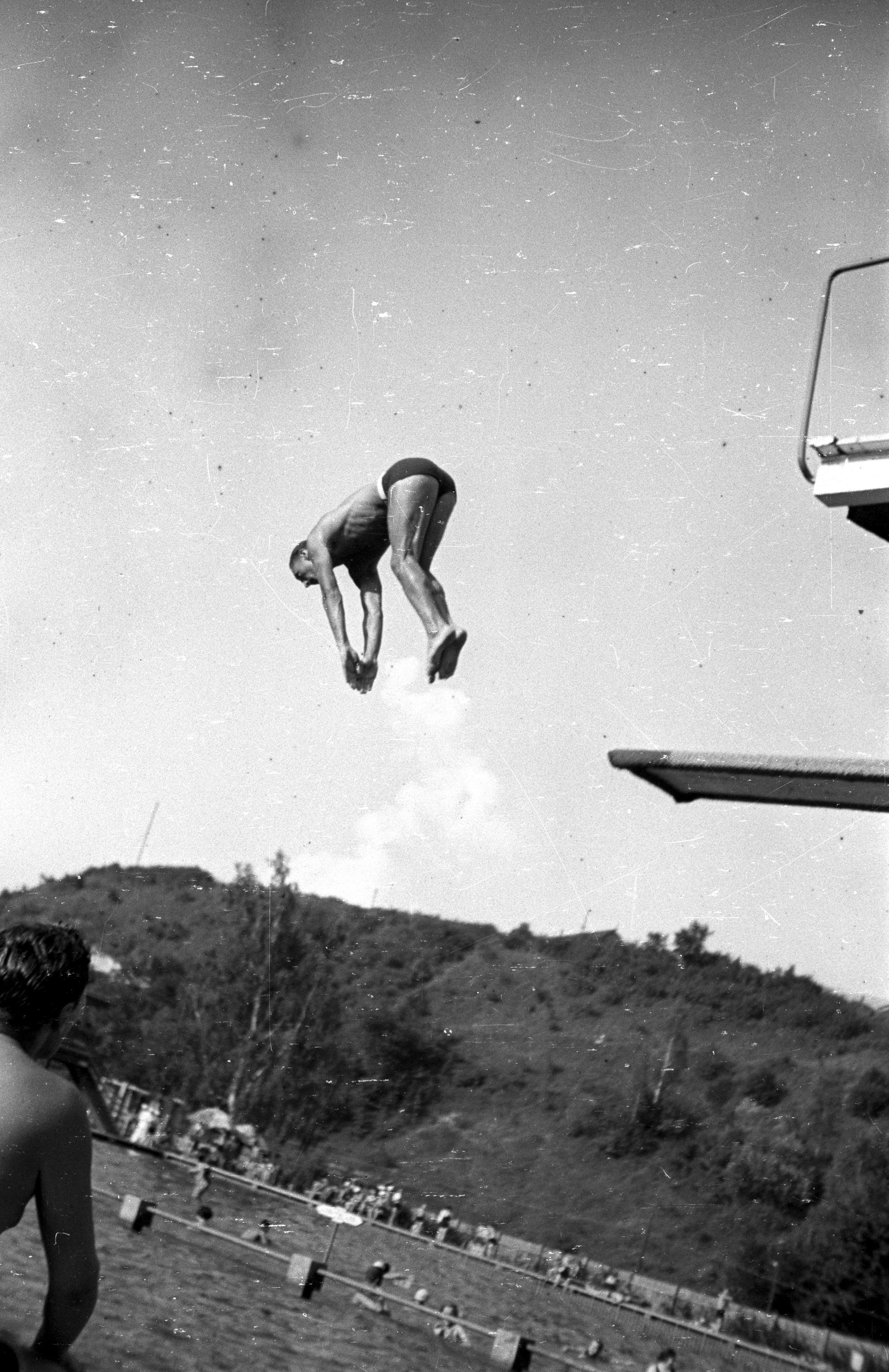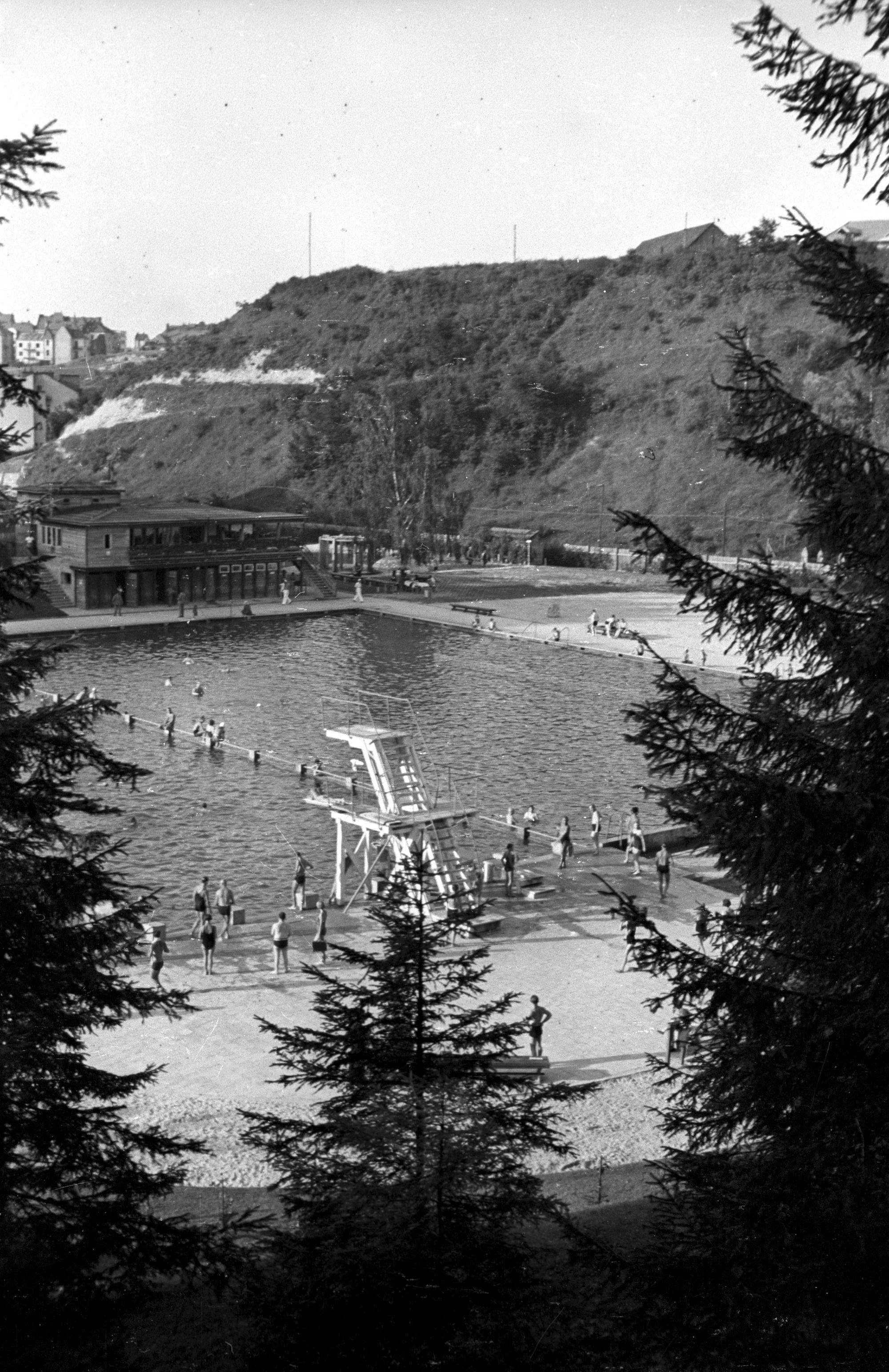A swimming pool in 1930s Lviv. Photographs by Włodzimierz Puchalski

Włodzimierz Puchalski (1909–1979) was born in Velyki Mosty, near Lviv. In 1931, he began his studies at Lviv’s Polytechnic university in the department of agriculture and forestry, in the city’s Dubliany district. From an early age, he showed a deep fascination for nature, which he both observed and photographed — helped by the camera his grandfather gave him. Puchalski probably honed his technique in the studio of the renowned Lviv photographer Witold Romer, eventually becoming an accomplished nature photographer.
Puchalski’s legacy consists of thousands of photographs depicting wildlife, birds, and other animals. Among this vast body of work, however, are a handful of rare images showing scenes from 1930s’ Lviv.
What distinguishes Puchalski’s urban photography from other images of interwar Lviv? At first glance, he appears to focus on familiar locations and architectural landmarks, both old and new. Yet on closer inspection, it becomes clear that architecture itself was not his primary subject. Rather, he was drawn to the interplay of light and shadow at different times of day and across the changing seasons. His attention gravitates toward parks, pathways, trees, benches, water, the sky, city panoramas (often glimpsed through the branches of trees) and linear street perspectives.
Puchalski’s images of Lviv do not conform to the conventions of classical street photography. Human figures are nearly absent. As Polish photography scholar Adam Sobota has noted, Puchalski “sought out shots that showed Lviv as a garden city.”
Photographs presented here document one of the revitalized public spaces of 1930s Lviv: the open-air swimming pool at Zalizna Voda, located on the city’s southern outskirts. The site originally featured the Kaminskyi pond, where Lviv residents had been swimming since the 1880s. In 1903, the city purchased the Kaminskyi family estate along with the pond. It remained in use until 1931, when it was closed due to sanitary concerns. In 1933, despite the global economic crisis and the particularly difficult situation in Poland, the city, with support from the central government, invested in the redevelopment of the site, transforming it into a modern open-air pool.
Puchalski likely took these photographs after 1934. Some were taken on a summer morning, probably before the pool had opened to visitors, between 8 and 9 a.m. (it opened at 9). Others were taken around noon (possibly on the same day, though this is uncertain) and show visitors already enjoying th setting. These photographs depict men, women and children together. In 1936, when local engineers described this new recreational site in Lviv, they noted that it was no longer divided into male and female sections, as had previously been the norm. Such separation, they wrote, “was no longer practiced.”
At the time, two swimming pools were constructed in Lviv: one at Zalizna Voda, the other in Zamarstyniv. Yet Puchalski photographed only the Zalizna Voda site, located in one of the city’s most exclusive neighborhoods. By contrast, Zamarstyniv had only recently transitioned from being a village on Lviv’s northern edge, in the Zhovkivska district, to becoming part of the city’s administrative framework, as laid out in the interwar “Greater Lviv” plan. From the 19th century through to the eve of World War II, the area had received little municipal investment. When viewed as a visual tour of the city, Puchalski’s Lviv series notably omits the northern, poorer districts.
Instead, his camera seems to trace a green arc (a kind of “corso”) forming a horseshoe-shaped belt that linked Lviv’s green areas from the east through the south to the west, but stopped short of the north. The swimming pool near Zalizna Voda Park lay along this arc. In his photographs, Puchalski captures this site nestled within the landscape of the Snopkiv Hills and Zalizna Voda Park, with the pavilions of the then Eastern market (Targi Wschodnie) visible on the distant horizon beyond Stryiskyi park.
Several photographs in this series depict a man leaping from a diving tower into the pool. These moments strongly evoke Water, a film by Puchalski’s teacher Witold Romer, shot at the same location in the second half of the 1930s. In Puchalski’s still images, the man is caught in midair, like a bird in flight; Romer’s film then seems to pick up where the photographs leave off, showing the diver’s descent into the water.
The similarity in subject and composition between the two works was probably not coincidental but intentional. Water as a feature of the urban environment (especially in its interaction with the human body) was a recurring motif in interwar photography. Photographers of the era captured the architecture of newly built swimming pools and documented these sites as emerging venues for leisure, in line with the growing popularity of sport and physical culture. In Puchalski’s images, however, the surrounding natural landscape remains just as important as the human figures themselves.
Puchalski’s Lviv series was never mentioned in photography journals. It seems he didn’t submit them to exhibitions nor competitions. Unlike his widely recognized hunting and nature images, this part of his work has remained on the margins, little known and largely unexplored. Yet through Włodzimierz Puchalski’s lens, a vision of the green city emerges: shaped by light and shadow, at the meeting point of urban modernity and natural beauty.


Translated from Ukrainian by Yuliia Kulish